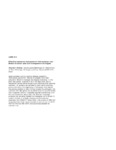Por favor, use este identificador para citar o enlazar este ítem:
http://www.alice.cnptia.embrapa.br/alice/handle/doc/993935| Título: | Effective resistance management with soybean rust: modes of action used and management strategies. |
| Autor: | GODOY, C. V.  |
| Afiliación: | CLAUDIA VIEIRA GODOY, CNPSO. |
| Año: | 2014 |
| Referencia: | In: IUPAC INTERNATIONAL CONGRESS OF PESTICIDE CHEMISTRY, 13., 2014, San Francisco. Crop, environment, and public health protection: technologies for a changing world: abstracts. Beltsville: ACS-AGRO, 2014. |
| Páginas: | p. 234. |
| Descripción: | Asian soybean rust is a serious disease caused by Phakopsora pachyrhizi. Several strategies have been adopted in Brazil to manage this disease including: (i) the host-free period, a period of 60 to 90 days from July to September during which farmers are restricted from planting soybean; (ii) growers are advised to plant early maturing group cultivars in the beginning of the season and reduce the sowing window to help the host evade the pathogen; (iii) cultivars with Rpp genes are available and are recommended with fungicide; and (iv) fungicides applied preventively or in the first symptoms. More than 100 different fungicidal products are currently labeled for managing rust in Brazil. A weaker efficacy of straight triazoles compounds was observed from 2006/07. Since 2009, only premix of DMI-QoI fungicides have been recommended to control rust. In 2013 the first mixture with SDHI compound was labeled for soybean rust. |
| Palabras clave: | Ferrugem asiática da soja |
| Tipo de Material: | Resumo em anais e proceedings |
| Acceso: | openAccess |
| Aparece en las colecciones: | Resumo em anais de congresso (CNPSO)  |
Ficheros en este ítem:
| Fichero | Descripción | Tamaño | Formato | |
|---|---|---|---|---|
| Effectiveresistancemanagementwithsoybeanrustmodesofactionusedandmanagementstrategies.pdf | 44.74 kB | Adobe PDF |  Visualizar/Abrir |









